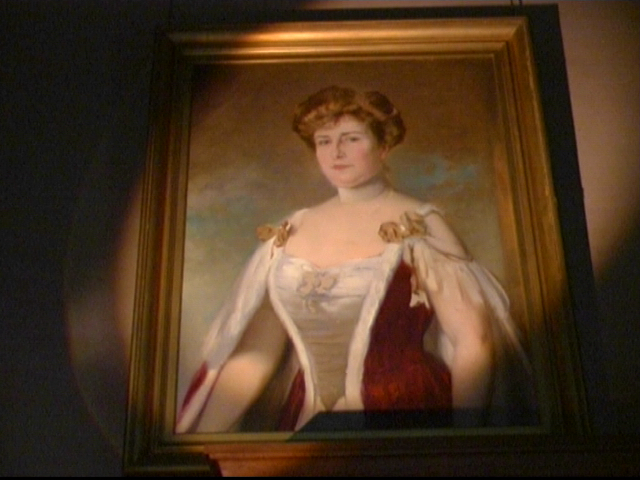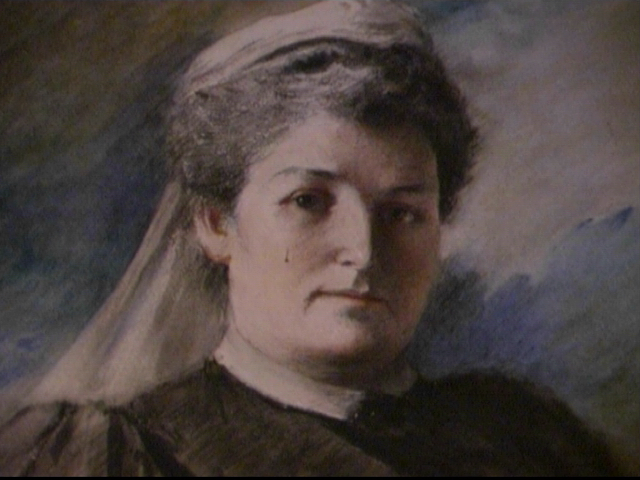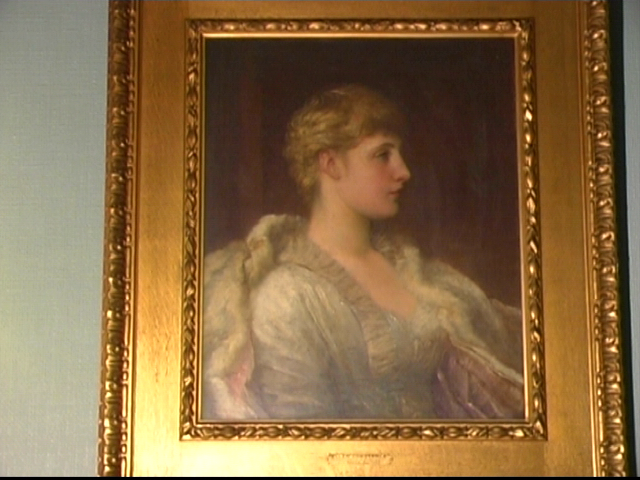Lived in Mourne Park from 1880 when he moved the main family seat from Shavington in Shropshire, extending the house further at this stage
Prior to this Mourne Park was used mainly as a holiday residence, designed and used for lavish entertainments. It was sometimes referred to as a “Shooting Box”.
The Third Earl developed property in London’s West End including major theatres. He kept a townhouse at 5 Aldford Street, Mayfair.
As Viscount Newry he was commissioned in the North Shropshire Yeomanry Cavalry in 1865, eventually becoming Lieutenant-Colonel in command of the regiment in 1889
In 1874 he served as High Sheriff of Down and was then elected to the House of Commons for Newry in 1871, a seat he held until 1874.
In 1880 he succeeded his grandfather as Earl of Kilmorey, but as this was an Irish peerage it did not entitle him to an automatic seat in the House of Lords. However, the following year Kilmorey was elected an Irish Representative Peer, and sat in the House of Lords until his death in 1915. In 1890 he was made a Knight of the Order of St Patrick.[1]
Francis Charles Needham, known as “The Old Earl”
Our Great Great Grandfather
Born 2nd August 1842
Died 28th July 1915 (aged 72)







Notable Moment
After the accession of King Edward VII in 1901, Lord Kilmorey was appointed Aide-de-camp (Supernumeracy) to His Majesty for the service of His Yeomanry Force
Born 1886, Grandfather of the 6th and current Earl of Kilmorey
Meanwhile his son, Viscount Newry and Mourne, had died in 1851, aged only 36, leaving three sons and three daughters. The eldest grandson thus became his heir, who anticipated the imminent demise of his grandfather. He enjoyed a very profligate life style.After his grand tour, he was sent to accompany Queen Victoria’s second son, the Duke of Edinburgh , on a voyage to Australia. While they were there a madman attempted to assassinate the Prince; young Viscount Newry gallantly led a posse of sailors, off their ship, to rescue the madman from the outraged crowd ( in order that he could be lawfully brought to justice, and hung!). He also passed time by shooting bears in north America. The civil war was on at the time, but he is supposed to have shot, with great impartiality ,whatever presented a reasonable target: be it Yankee, Confederate, or bear.
In 1880 his grandfather, the 2nd Earl, finally died at the great age of 92, and was at last laid to rest beside his beloved Priscilla in the Richmond mausoleum. By then the new Earl had spent so much of his inheritance in advance, that he had to part with the family seat, Shavington.
In 1881 he married Ellen Constance Baldock, a great beauty. The third Earl and his young wife faced the prospect of actually living at Mourne Park, not just visiting it as a shooting box. He is supposed to have found cattle grazing right up to the door, and roundly declared that it was not fit for a gentleman to live in.
(text extract taken from A Short History of Mourne Park, Julie Ann Anley, October 1999)
Accordingly they started married life along the Lough shore in Rostrevor, while extensive alterations were made to the house. The kitchen roof was raised, and above it a nursery wing was constructed. (This accounts for the height of the hooks in the kitchen beams, previously used for hanging game.) Their two sons, known in the family as “Bobby” and “Buddy”, soon occupied the wing, later to be joined by their sister, Cynthia. The wilderness that had been the garden gradually re-emerged( Bobby later told of “discovering” the top pond when he was a small boy), and the walled kitchen garden was laid out behind the model farm. Peaches and nectarines continued to fruit there, although the glass houses were collapsing, in the 1970s.
In those days all the laundry from their London house, as well as the household laundry from Mourne Park, was washed in the laundry on the east side of the back yard. It was packed into wicker baskets, sent by rail to Holyhead, then by ship to Greenore, trans-shipped onto the local ferry to Greencastle, then brought by horse and cart to the laundry. This enabled laundry maids to be kept in work all the time, even when the family were away. This weekly ritual continued up until the middle of the 1920s.
In the 1890s there was a scheme mooted, to dig out a fifteen acre lake, to the south of the house. Lord Kilmorey was skeptical, fearing it might flood his new gate lodge; but he was persuaded by his foreman of outside works, Alexander Bowsie. The lake was duly dug out, and a fine system of Victorian sluices installed. Then one night the gate lodge was flooded out by water from the lake. Alexander Bowsie was summoned by the irate Earl, and sent packing back to Scotland. The story tells of the Bowsie family, each “wean” clutching its tied bundle of possessions, climbing onto the long cart and trailing sadly away. A few years later the estate Steward lay dying at his house at the farm (now part of the Golf Clubhouse); he besought his friends to fetch the Earl (a most unusual request).
Eventually they did call him, whereupon the Steward confessed: “’Twas not Alexander Bowsie but ’twas I who opened the sluice gates and flooded the gate lodge.” After that, his conscience eased, he died. Apparently he had been jealous of the lake’s success. I am glad to say that Alexander Bowsie was recalled and, together with all the weans and their bundles made the long trek back from Scotland. His daughter-in-law still lived in the gate lodge until the 1970s.
Queen Victoria’s Jubilee was celebrated by an avenue of limes being planted, ever since called the “Jubilee Avenue”. Another avenue, the Hunting Gate Road, was planted with a variety of conifers; it was renamed “Christmas Tree Avenue” because of their size in 1920 when the new bride arrived.
The 3rd Earl of Kilmorey (called the “old Earl” locally) continued in the extravagant ways of his youth. He and his friend, the Prince of Wales, complained that there was no comfortable Inn in the neighbourhood, where a gentleman might entertain his lady friends. So they clubbed together and built a hotel at Rostrevor, later the Great Northern Hotel. It had a complete set of tableware with the Kilmorey crest, kept for when he should be dining there. (Unfortunately it was destroyed in the fire when the hotel was burnt to the ground in the 1970s.) To furnish himself with funds (Ellen Constance held the purse strings) the Old Earl used to bring a copyist from Dublin, whenever his wife was away, to make copies of the family portraits. These were hung in the house, and the originals sold. One day she came back from London unexpectedly early, and he was caught; that is why there are two identical pictures in the hall to this day.
The two boys, as they grew up , were sent to Eton. Their tutor had so enjoyed living in the kingdom of Mourne that he obtained a local property, Drumindoney, and founded a boys’ Prep school, which he called Mourne Grange. This flourished until the early 1970s, when it was acquired by the Camphill movement, and became a farm-based village community.
Their eldest son joined the Life Guards. To celebrate his coming of age in 1904, the laundry was converted into new East Wing, containing the Long Room and Sitting Room; they are joined to the house by the Long Room Passage. A new laundry was built, beside the Gardener’s cottage.
The Old Earl died in 1915. His son was serving in the Army, at Verdun. When he was recalled for his father’s funeral he arrived home with his pockets stuffed with conkers. These were planted out and are known as the Verdun Chestnuts
In 1862 (aged nineteen), Kilmorey proposed to give a ball; this was prohibited by the college authorities, chiefly by Charles Lutwidge Dodgson (better known as Lewis Carroll). The wife of Henry Liddell, the Dean of the college, had supported the ball; the Liddell’s Irish residence was close to the Kilmorey seat of Moure Park, and this favour to a family friend might have made social connections for her several daughters (including Alice). The ball and the resulting coldness between the Liddells and Carroll is mentioned in his diary as “Lord Newry’s business”.[2] He was graduated in 1864.














